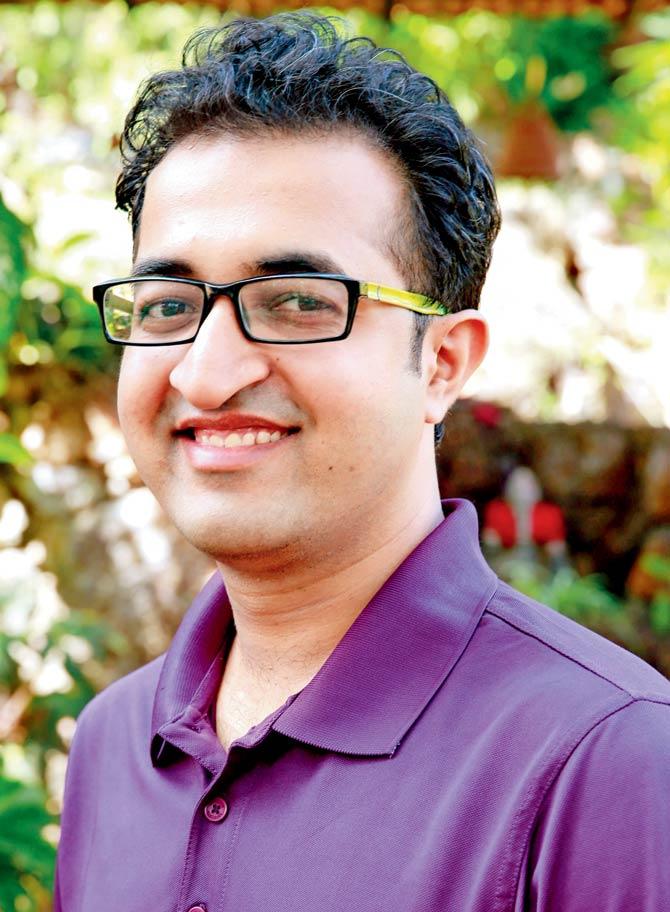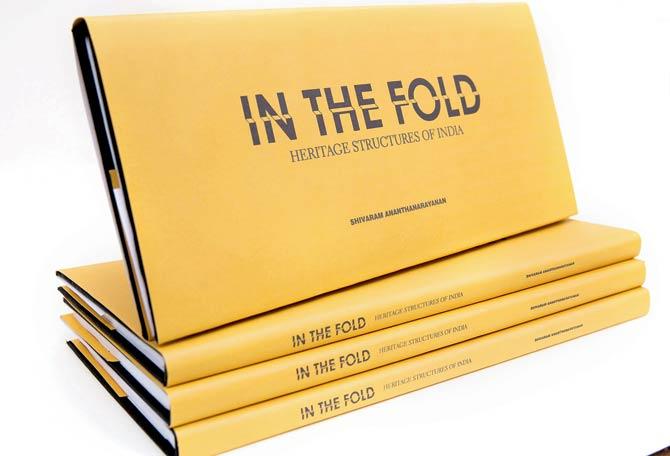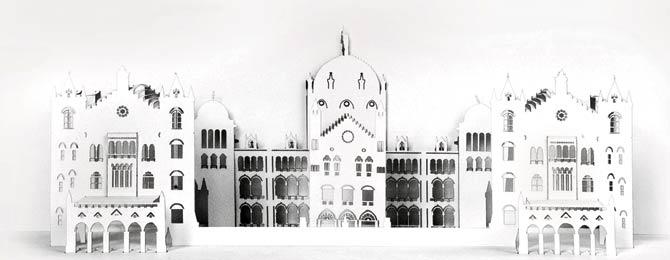With 10 3D monuments that fall flat and rise on demand, a Goan origamist’s new book combines two passions

Shivaram Ananthanarayanan
If either heritage or the Japanese art of paper folding interest you, or both, Shivaram Ananthanarayanan’s latest creation deserves your attention. The 27-year-old Goan is the creator of In the Fold, a slim unassuming book that opens up to reveal 10 architectural marvels of the country. With deft nicks and folds, 3D monuments, including the Chhatrapati Shivaji Terminus (CST) in Mumbai and Delhi’s Sansad Bhavan, explode out of a single sheet of paper.
ADVERTISEMENT

Shivaram Ananthanarayanan
Ananthanarayanan employs techniques of origamic architecture, a method developed by Japanese architect Masahiro Chatani. It is easy to mistake In the Fold as a pop-up book, but Ananthanrayanan is keen on a distinction. "Pop-up books make use of multiple pieces of paper that are glued together to achieve this effect. In origamic architecture, we cut and fold a single sheet of paper." Every paper monument is white on white, on which light and shadow play games to highlight the intricate details. Ananthanarayanan, a self-taught origamist and paper engineer, says, "Origami can be very complex even though it uses the geometry of straight lines."

First in the series of In the Fold is a paper-tribute to 10 Indian heritage structures. Pics/Shrinivas Ananthanarayanan
His statement is reiterated by his rendition of CST, one of the most challenging pieces in the book. "CST has a lot of depth —there are five levels, several windows and doorways. Plus, there are complicated lines and the dome shape is very interesting to make," says Ananthanarayanan. But CST comes only as a secondary challenge to Baroda's Laxmi Vilas Palace. The simplest, he says, was the Howrah Bridge, although it got tricky with cutting.
Starting with a long list of almost 80 monuments selected by architect Dean D’Cruz, the finalists in the book were chosen on the basis of intriguing shapes that allowed for a perfect silhouette and minimalism. The paper is the hero here. With a temple, a church, a gurudwara, the book is inclusive, although Ananthanarayanan claims that the trait is incidental. Agra’s Taj Mahal, however, is conspicuously absent. "It is so overdone and wasn’t much of a challenge," he dismisses. For the Taj, we will just have to settle for a snow-globe miniature for now.

Mumbai’s CST is one of the most complex architectural origami works in the book
The book has been a year in the making and each design has been prototyped for a month-and-a-half, under the guidance of D’Cruz, who once worked with noted Goa-based architect Gerard Da Cunha. Hand-drawn designs had to be cut and tested so that they could fold compactly. While the monuments were finally laser-cut based on the templates, the final folding and stitching of the imported corded paper is done meticulously and nimbly by hand. However, make-by-hand is no inexpensive affair; throw in laser cutting and you add to overall cost.
In the Fold: Heritage Structures of India, published by D’Cruz’s firm Mozaic, he hopes is the first in a series, and later volumes will pay paper-tributes to heritage railway stations, churches and so on. "Besides, origamic architecture can be practised on plastic or metal sheets as well," he says.
Ananthanarayanan’s Dabolim house, a low-cost tiled rooftop abode designed by D’Cruz, is a trove of paper, with some 800 unused sheets lying around on any given day. The original origamic architect in the family was Shivaram's father, TR Ananthanarayanan, a naval commander, who first struck upon the idea of heritage monuments that could fold up. The secret behind his son’s secret with precise folds and cuts, like all good lovers: patience. "Sometimes, on the 200th fold, the paper would tear. Or, while prototyping for the heritage structure, the paper would be cut in half. And I would start all over again."
 Subscribe today by clicking the link and stay updated with the latest news!" Click here!
Subscribe today by clicking the link and stay updated with the latest news!" Click here!








